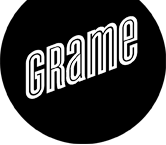Mots clés
2011 |
|
Jouvelot, Pierre; Orlarey, Yann Dependent vector types for data structuring in multirate Faust (Journal Article) 2011. (Abstract | Links | BibTeX | Étiquettes: computing, Denotational, Dependent, Domainspecificlanguages, multirate, semantics, Static, Synchronoussignalprocessing, systems, type) @article{ Jouv11 ,
title = {Dependent vector types for data structuring in multirate Faust}, author = {Pierre Jouvelot and Yann Orlarey}, editor = {Elsevier}, url = {faust-elsevier2011.pdf}, year = {2011}, date = {2011-01-01}, booktitle = {Computer Languages, Systems & Structures}, abstract = {Faust is a functional programming language dedicated to the specification of ex- ecutable monorate synchronous musical applications. To extend Faust capabil- ities to important domains such as FFT-based spectral processing, we introduce here a multirate extension of the core Faust language. The novel idea is to link rate changes to data structure manipulation operations. Creating a vector-valued output signal divides the rate of input signals by the vector size, while serializ- ing vectors multiplies rates accordingly. As duals to vectors, we also introduce record-like data structures, which are used to gather data but do not change sig- nal rates. This interplay between data structures and rates is made possible in the language static semantics by the introduction of dependent types. We present a typing semantics, a denotational semantics and correctness theorems that show that this data structuring/multirate extension preserves the language synchronous characteristics. This new design is under implementation in the Faust compiler.}, keywords = {computing, Denotational, Dependent, Domainspecificlanguages, multirate, semantics, Static, Synchronoussignalprocessing, systems, type}, pubstate = {published}, tppubtype = {article} } Faust is a functional programming language dedicated to the specification of ex- ecutable monorate synchronous musical applications. To extend Faust capabil- ities to important domains such as FFT-based spectral processing, we introduce here a multirate extension of the core Faust language. The novel idea is to link rate changes to data structure manipulation operations. Creating a vector-valued output signal divides the rate of input signals by the vector size, while serializ- ing vectors multiplies rates accordingly. As duals to vectors, we also introduce record-like data structures, which are used to gather data but do not change sig- nal rates. This interplay between data structures and rates is made possible in the language static semantics by the introduction of dependent types. We present a typing semantics, a denotational semantics and correctness theorems that show that this data structuring/multirate extension preserves the language synchronous characteristics. This new design is under implementation in the Faust compiler.
|
2002 |
|
Orlarey, Yann; Fober, Dominique; Letz, Stephane An Algebraic approach to Block Diagram Constructions (Inproceeding) GMEM, (Ed.): Actes des Journées d’Informatique Musicale JIM2002, Marseille, pp. 151–158, 2002. (Abstract | Links | BibTeX | Étiquettes: algebra, block-diagram, dataflow, Denotational, DSP, graph, semantic) @inproceedings{ Orlarey:02a ,
title = {An Algebraic approach to Block Diagram Constructions}, author = {Yann Orlarey and Dominique Fober and Stephane Letz}, editor = {GMEM}, url = {faust-jim2002.pdf}, year = {2002}, date = {2002-01-01}, booktitle = {Actes des Journées d’Informatique Musicale JIM2002, Marseille}, pages = {151–158}, abstract = {We propose an algebraic approach to block diagram construction as an alternative to the classical graph approach inspired by dataflow models. This block diagram algebra is based on three binary operations : sequential, parallel and recursive constructions. These operations can be seen as high level connection schemes that set several connections at once in order to combine two block diagrams to form a new one. Such algebraic representations have interesting applications for visual languages based on block diagrams. In particular they are very useful to specify the formal semantic of these languages.}, keywords = {algebra, block-diagram, dataflow, Denotational, DSP, graph, semantic}, pubstate = {published}, tppubtype = {inproceedings} } We propose an algebraic approach to block diagram construction as an alternative to the classical graph approach inspired by dataflow models. This block diagram algebra is based on three binary operations : sequential, parallel and recursive constructions. These operations can be seen as high level connection schemes that set several connections at once in order to combine two block diagrams to form a new one. Such algebraic representations have interesting applications for visual languages based on block diagrams. In particular they are very useful to specify the formal semantic of these languages.
|
|
Orlarey, Yann; Fober, Dominique; Letz, Stephane An Algebra for Block Diagram Languages (Inproceeding) ICMA, (Ed.): Proceedings of International Computer Music Conference, pp. 542–547, 2002. (Abstract | Links | BibTeX | Étiquettes: algebra, block-diagram, dataflow, Denotational, DSP, graph, semantic) @inproceedings{ Orlarey:02b ,
title = {An Algebra for Block Diagram Languages}, author = {Yann Orlarey and Dominique Fober and Stephane Letz}, editor = {ICMA}, url = {faust-icmc2002.pdf}, year = {2002}, date = {2002-01-01}, booktitle = {Proceedings of International Computer Music Conference}, pages = {542–547}, abstract = {We propose an algebraic approach to block diagram construction as an alternative to the classical graph approach inspired by dataflow models. The proposed algebra is based on three binary operations of construction : sequential, parallel and recursive constructions. These operations can be seen as high level connection schemes that set several connections at once in order to combine two block diagrams to form a new one. Algebraic representations have interesting application for visual languages based on block diagrams and are useful to specify the formal semantic of these languages.}, keywords = {algebra, block-diagram, dataflow, Denotational, DSP, graph, semantic}, pubstate = {published}, tppubtype = {inproceedings} } We propose an algebraic approach to block diagram construction as an alternative to the classical graph approach inspired by dataflow models. The proposed algebra is based on three binary operations of construction : sequential, parallel and recursive constructions. These operations can be seen as high level connection schemes that set several connections at once in order to combine two block diagrams to form a new one. Algebraic representations have interesting application for visual languages based on block diagrams and are useful to specify the formal semantic of these languages.
|

